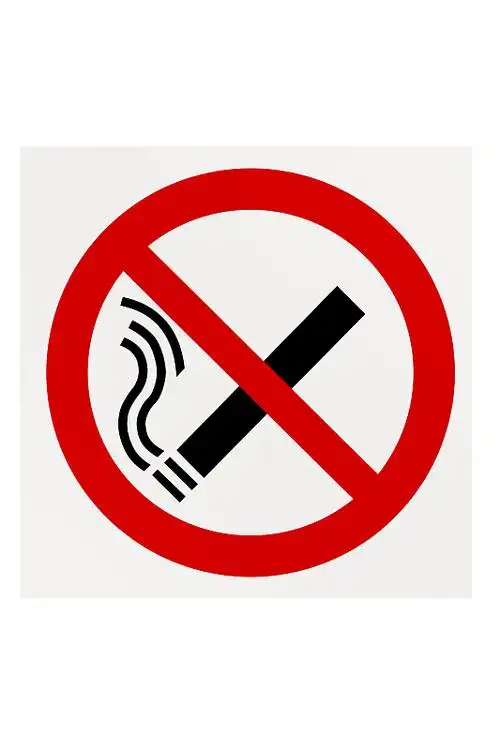The Unseen Alliance: How Smoking Fuels Antifungal Treatment Failure in Lung Fungal Balls
For many, a persistent cough or a feeling of breathlessness is often attributed solely to the direct damage caused by smoking. We are familiar with the risks of chronic obstructive pulmonary disease (COPD), emphysema, and lung cancer. However, a more insidious and complex relationship is unfolding within the smoke-filled airways of countless individuals—a relationship where tobacco use directly empowers a common fungus to resist our best medical defenses. This is the story of how smoking promotes antifungal drug resistance in a condition known as pulmonary aspergilloma, creating a perfect storm of treatment challenges and complicating patient recovery.
To understand this alliance, we must first meet the key players. Aspergillus is a ubiquitous fungus; its spores are in the air we breathe every day. For most people with healthy immune systems, this poses no problem. However, in lungs pre-damaged by long-term smoking, conditions are ripe for trouble. The architectural integrity of the lungs is compromised. Smoking destroys the tiny, hair-like cilia that line our airways and act as a natural cleaning system, sweeping mucus and debris—including fungal spores—out of the lungs. This damage, often manifesting as cavitary lesions or bullae (large air-filled spaces), creates a sheltered haven. When Aspergillus spores are inhaled and settle in these cavities, they can germinate and form a dense, tangled mass of fungus fibers, mucus, and inflammatory cells. This mass is a pulmonary aspergilloma, commonly called a "fungal ball."
The standard management for a symptomatic aspergilloma, which can cause coughing up blood (hemoptysis), severe coughing, and weight loss, often involves antifungal medications. Drugs like voriconazole and itraconazole are the mainstays of treatment. They work by targeting specific components of the fungal cell membrane, ultimately causing the fungus to die. The goal is to shrink the fungal ball, control symptoms, and prevent life-threatening complications. But herein lies the growing crisis: these drugs are increasingly failing, and the patient's history of smoking is a major, often overlooked, reason why.
So, how exactly does smoking tip the scales in favor of the fungus? The mechanism is not a single, simple pathway but a multi-pronged assault that creates an environment where drug resistance can thrive.

Firstly, the composition of cigarette smoke itself is a key agitator. Smoke is not a single substance but a complex cocktail of over 7,000 chemicals, many of which are toxic. Research indicates that some of these components can directly interfere with the way antifungal drugs work. They can induce stress responses in the Aspergillus fungus. Think of it as a constant, low-level alarm bell ringing for the fungal colony. This persistent stress pushes the fungus to adapt and evolve survival mechanisms at an accelerated rate. In this heightened state of alert, genetic mutations are more likely to occur. A random mutation that happens to make the fungus less susceptible to a drug like voriconazole is no longer a fluke; it becomes a selected advantage. The smoke has effectively created a training ground for resistance, where only the toughest, most drug-resilient fungal strains survive and multiply.
This leads us to the crucial concept of the smoke-adapted fungal biofilm. A biofilm is not just a random clump of cells; it is a highly organized, protective community that microorganisms form. It's like a fortified city. Within the lung cavity, Aspergillus doesn't just float freely; it anchors itself and constructs this slimy, extracellular matrix. Smoking has been shown to dramatically enhance the formation and robustness of these biofilms. The toxic chemicals in smoke act as a signal, encouraging the fungus to build thicker, more impenetrable walls.
Why is this a problem for treatment? Antifungal drugs have a notoriously difficult time penetrating these biofilms. The matrix acts as a physical barrier, preventing the drug from reaching the fungal cells at its core. Furthermore, the cells deep within a biofilm are often in a dormant, slow-growing state, making them less vulnerable to drugs that target active cellular processes. This combination of physical barrier and altered cell physiology is a primary driver of treatment failure in chronic pulmonary aspergillosis. The standard dose of an antifungal drug that would easily wipe out a free-floating fungus is rendered ineffective against this shielded community. This is a classic example of what clinicians call "recalcitrant aspergilloma," a condition stubbornly unresponsive to therapy.
The host environment—the smoker's lung—is equally complicit in this process. Chronic smoking leads to a state of persistent inflammation and oxidative stress. The body's immune cells are in a constant, frantic battle against the inhaled toxins, releasing a flood of reactive oxygen species. This chaotic inflammatory milieu does more than just damage lung tissue; it can also chemically modify the antifungal drugs themselves. Some studies suggest that the high oxidative stress environment can degrade the drugs, reducing their effective concentration at the site of infection. The very battlefield where the fight is happening is working against the administered reinforcements.
Furthermore, the immune system in a smoker is often dysregulated. The constant assault from smoke exhausts and confuses the immune cells that are supposed to clear the fungal infection, such as alveolar macrophages and neutrophils. This creates a scenario of immunocompromised district in the smoker's lung, not in the classical sense of AIDS or chemotherapy, but as a functional local immunodeficiency. The fungus, therefore, faces less coordinated immune pressure, allowing the drug-resistant mutants that do emerge to establish themselves without being cleared by the body's own defenses. This synergy between a weakened immune response and a fortified fungal community is devastating.
For patients and physicians, recognizing this connection is paramount for improving aspergilloma treatment outcomes. A one-size-fits-all approach to treating a fungal ball is no longer sufficient. When a patient with a long-standing smoking history presents with an aspergilloma that is not responding to first-line antifungals, the immediate suspicion should lean towards the possibility of a smoke-induced resistant strain or a formidable biofilm. This necessitates a more sophisticated diagnostic approach. Simply culturing the fungus may not be enough. Molecular testing to identify specific genetic markers of resistance, such as mutations in the cyp51A gene which confers resistance to azole drugs, becomes crucial.
The management strategy must then be tailored. This could involve switching to a different class of antifungal drugs, using higher doses (if tolerable), or employing combination therapy where two drugs with different mechanisms are used simultaneously to break down the fungus's defenses. In some cases, surgical intervention to remove the fungal ball may be reconsidered more aggressively if drug therapy is failing, despite the higher risks surgery carries in patients with compromised lung function.
Ultimately, the most powerful intervention remains prevention and addressing the root cause. Smoking cessation is the cornerstone of managing pulmonary aspergilloma complications. While it cannot reverse existing cavitary damage overnight, stopping the influx of toxic smoke fundamentally changes the lung environment. It halts the continuous stress signal to the fungus, reduces the drive for robust biofilm formation, and allows the lung's local immune defenses to begin a slow process of recovery. This, in turn, can help restore the efficacy of antifungal medications and prevent the emergence of new resistant strains.
In conclusion, the link between smoking and antifungal drug resistance in pulmonary aspergilloma is a compelling example of how a lifestyle factor can directly alter the course of an infectious disease. It is not merely a coincidental risk factor but an active driver of a treatment-resistant phenotype in the fungus. By understanding the mechanisms—from stress-induced mutations and robust biofilm formation to a pro-inflammatory, immunosuppressive lung environment—we can better appreciate the profound challenges faced by these patients. For those living with a fungal ball and a history of smoking, the path to better health is undeniably steep. However, through a combination of smoking cessation, advanced diagnostics, and personalized antifungal strategies, we can begin to dismantle this unseen alliance and offer new hope for successful treatment.












